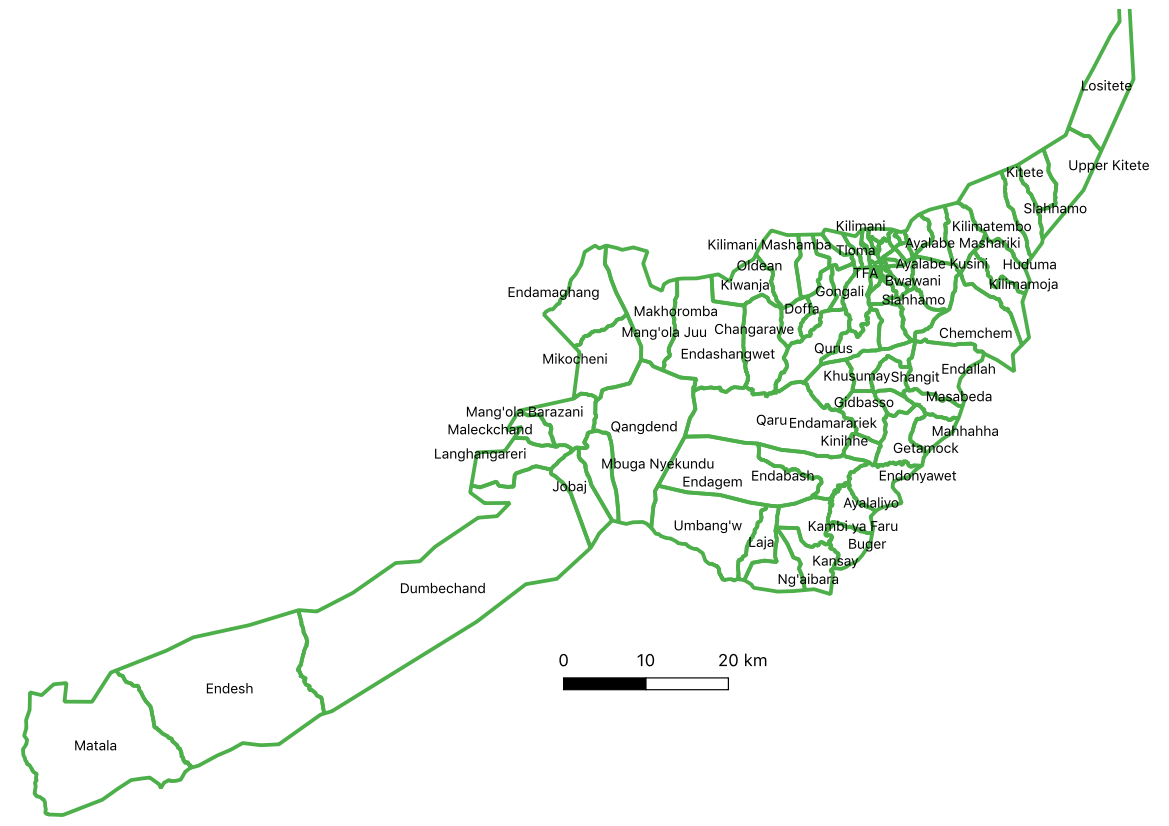Karatu district
Karatu district is one of the seven Councils in Arusha Region. The District is estimated to have an area of approximately 3,300 square kilometers, with Lake Eyasi occupying about 10.6 square kilometers. Karatu District is divided into four divisions (Mbulumbulu, Eyasi, Karatu and Endabash) , 14 wards and 59 registered villages. The climate varies from one area to another in the district. The main economic activities carried in Karatu are Agriculture and livestock keeping which occupies more than 85%. (https://karatudc.go.tz/historia)

Grazing areas
The study found that in the Karatu district, a number of villages have very small grazing areas or no grazing areas at all. This is primarily due to the fact that many communities in the district have shifted towards agro-pastoralism, where crop cultivation has become more important to household income than livestock keeping. This shift in livelihoods has resulted in a reduction in available grazing land for livestock.
To cope with this reduction in grazing land, some farmers in the district have adopted zero-grazing practices, where their animals are kept in enclosures and fed crop residues. This is particularly common among farmers with small herds of fewer than 50 cattle. For those with larger herds, typically more than 50 cattle, they often move their animals to nearby districts like Monduli and Simanjiro during the dry season when grazing land is scarce in Karatu. They return their animals to the Karatu district during the early dry season, just after the crop harvest, when crop residues are available for feeding.
Overall, the shift towards agro-pastoralism has had a significant impact on livestock keeping practices in the Karatu district, with many farmers adapting their practices to cope with the reduction in available grazing land. This has led to changes in the way livestock are managed and fed, as well as changes in the use of grazing land and other resources.
The differences in seasons were not significant among the districts. The wet season for Monduli and Longido was considered to start in January and last until April, while in Karatu it can extend until May, depending on the rainfall in a particular year. The dry season was considered to start in May and last until July or August, and can extend to September in some areas. It gets extremely dry from October to December. Similarly, villages with large areas and a proper management system allocated their grazing areas based on seasonality, allocating grazing areas to be used during the wet and dry seasons.